NBA Rumors: CBA intel and what it means going forward
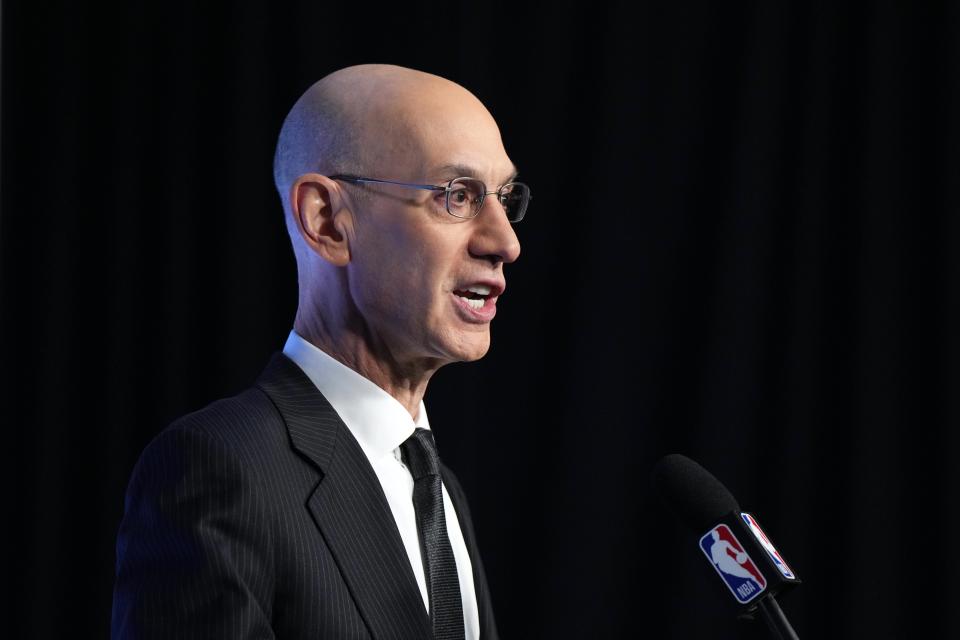
HoopsHype’s Michael Scotto and Yossi Gozlan share new intel on the NBA’s collective bargaining agreement and what it means for the league going forward on the latest HoopsHype podcast episode.
For more interviews with players, coaches, and media members, be sure to like and subscribe to the HoopsHype podcast on Spotify, Apple Podcasts, and anywhere else you listen to podcasts. Listen to the podcast above or check out some snippets of the conversation in a transcribed version below.
1:50 New second tax apron intel
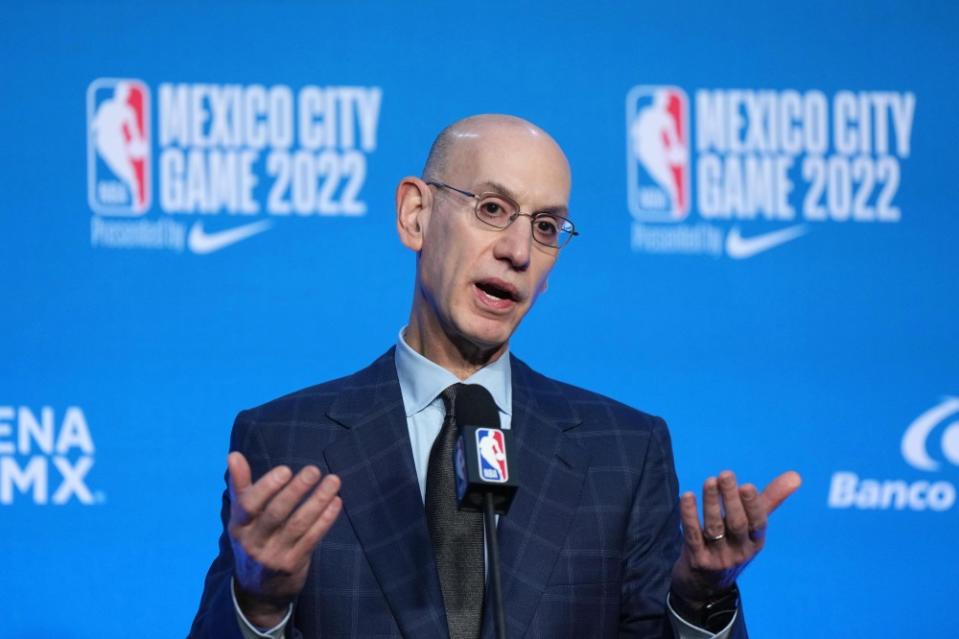
Kirby Lee-USA TODAY Sports
Yossi Gozlan: The second apron is a huge change. It’s going to change a lot of the way teams go about building their teams. Teams are going to have to plan ahead more, and they’re not going to be able to do a lot of the things that they’ve done to try and speed up the process. You’re going to have to be more careful… If you’re going to try to have a title window, things are going to get expensive. Even if you’re committed to spending, it’s going to be hard to extend your window when you’re going to be limited in the ways you can add depth. If you’re over the second apron, you don’t have a mid-level exception. You can only increase payroll by re-signing your own players, signing draft picks, and signing minimum players. Automatically, that’s going to increase the value of first-round picks.
If you’re a team like OKC, Utah, or San Antonio and you’ve been hoarding all these picks and got a lot of criticism for it, yeah, you can’t draft all these players, but once they’re ready to compete like OKC who’s about to make the next step, they’re always going to have a chance to replenish their depth. They’re never going to have an issue trying to surround Shai Gilgeous-Alexander, Jalen Williams, Josh Giddey, and everyone else (Chet Holmgren) with more talent because they’ve got extra first-round picks to either make selections with or trade them for veterans they need. Teams like that are well-equipped for the new CBA.
Teams like the Suns made some big trades and signed some of their best players to expensive contracts. They’re going to be limited now. The Suns this summer are going to have to try and re-sign everyone this summer as much as they can because they’re basically going to be over the second apron and won’t have any mid-level exception, most likely, and they’re limited in picks going forward… In a way, to me, it feels like an actual hard cap.
The second apron is supposed to be implemented next season. One of the things that got a pretty strong reaction was the fact that teams won’t be able to take in more money than they’re giving out in a trade if they’re over the second apron. That’s something I heard is supposed to be eased in. For example, something they might not do next season is dollar for dollar. Maybe for teams over the second apron, the amount of money they can take back could be somewhere between $0 and 125 percent. Right now, under the current CBA, teams over the tax can take back up to 125 percent of their outgoing salaries. There’s probably going to be some easing into that before they go dollar for dollar. I think this is pretty notable because of how teams are going to have to plan ahead if they’re planning on spending and becoming a second apron team. This could really dictate how certain teams operate this offseason. This might be their last chance to do an uneven trade. The Kevin Durant trade to the Suns and the James Harden trade to the Nets are recent examples of trades that wouldn’t have been legal under if the second apron had already been implemented. When those teams did those trades, they took full advantage of the 125 percent amount rule and they basically sent out the minimum salary requirements.
Michael Scotto: Some things that stuck out to me from talking to people around the league about it (second tax apron), and in particular agents, some agents said the second tax apron and the mid-level exception clause was about the small market teams getting their voices heard. The new second tax apron could cause teams to lose out on the mid-level exception, and more teams will be looking for gems or sleepers, which could hurt the middle class when it comes to players.
Gozlan: I think what could be positive about the second apron, in my opinion, is it’s supposed to help the middle class of players. If you have this de facto apron, depth is more valuable. I think this makes Bird Rights more valuable and helps role players who aren’t making that much and could even get squeezed for the minimum.
14:00 Extensions going from 120 to 140 percent
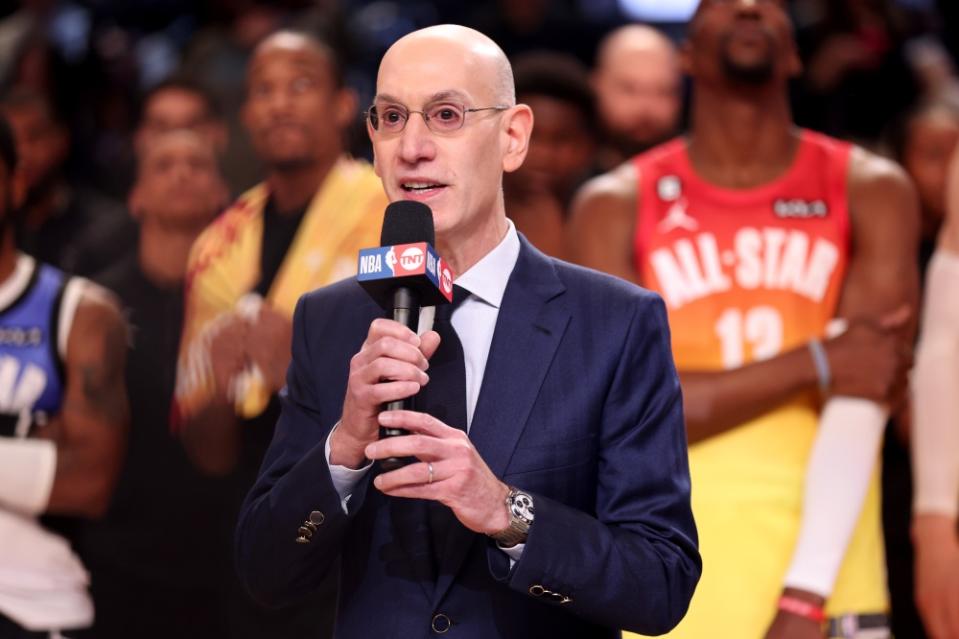
Tim Nwachukwu-Getty Images
Gozlan: That’s something that should help everyone, including sub-All-Star players that didn’t sign for max contracts and outplayed the value of those contracts. I wrote about some of them, like OG Anunoby, Dejounte Murray, Lauri Markkanen, and Domantas Sabonis too. Under the current rules, the 120 percent raise kind of became outdated as the salary cap kept going up. This was something that’s been due. I know there was discussion over the past year or so about whether there should be no limit to the extension rules and just let players sign up to the max in an extension. I thought that would’ve been a step too far because that would end free agency and the fun aspects of it as we know it. Now, these teams like the Kings, Hawks, Jazz, and Raptors with those players I mentioned have a better chance of extending these players.
Scotto: In theory, it’ll help. I also think what’s interesting is if a player doesn’t want to do an extension. Then, you’ll know he doesn’t want to be there anymore. It gives even more clarity on that from a player’s intention. I think that’ll be something to monitor. We’ve also seen in years past where players could’ve gotten more money, like DeMarcus Cousins in Sacramento, and he didn’t get it and got traded.
17:40 More than two super-max players, cap smoothing and qualifying offers
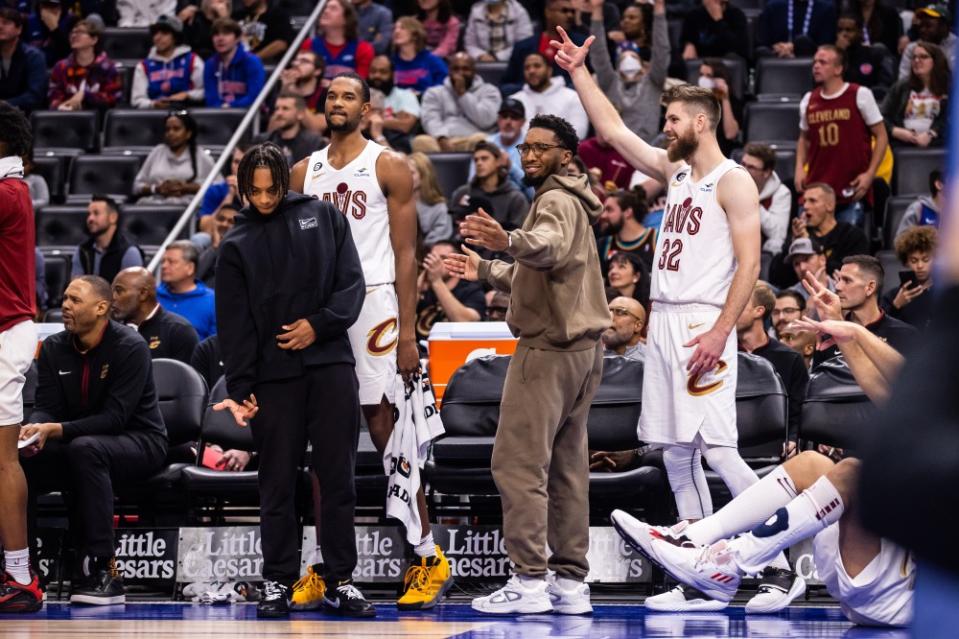
Allison Farrand-USA TODAY Sports
Scotto: The first thing I thought of was this is good news for the Cleveland Cavaliers because you’ve got Darius Garland and Donovan Mitchell on those types of deals, and eventually, a lot of people around the league think Evan Mobley is going to be a max extension guy. Now, they’d be able to keep all those guys.
Gozlan: I want to say the original rule was pretty much targeted at the Warriors right after they got Kevin Durant and after they already drafted Stephen Curry, Klay Thompson, and Draymond Green. I get the feeling that it was a reaction to that to try to limit a team’s ability to pay that many All-Star-level players.
Scotto: Other things out there in the new CBA, such as the cap smoothing. It seems like the league doesn’t want to have another Durant to the Warriors situation. The qualifying offers are also going up, which is notable. The first thing that came to mind regarding that was when Kristaps Porzingis threatened to leave New York and sign the one-year qualifying offer and then go into unrestricted free agency, and then the Knicks traded him to Dallas.
Gozlan: When the NBA shut down and then came back after Covid, they decided to implement a cap of 10 percent, which is going to be official now permanently going forward on rises. I think everyone is pretty satisfied with that. Now that we’ve had this trial version these past few years, it gave both sides more confidence to go with it. As the cap gets bigger, the 10 percent rises also become bigger per dollar amount. The cap is still going to be going up plenty.
You mentioned the qualifying offers. I’ll be interested to see how that works, whether each qualifying offer shoots up 10 percent each or if it’s 10 percent of the rise of the cap. I imagine there was always some type of discussion between the owners and players about what to do about rookie-scale contracts and restricted free agency. Obviously, owners would love to make rookie contracts longer. I think players would eventually love to get rid of restricted free agency altogether.
One thing I’ve always wondered is when are we going to see a marquee player accept a qualifying offer and have one year where he’s making less than he should and then become an unrestricted free agent the next season. It still hasn’t happened, but it feels like we’re getting closer because the qualifying offers have gone up a lot for a couple of years now.
Scotto: It might make a team turn around and say maybe they won’t extend a qualifying offer to a guy that’s on the bubble because they (qualifying offers) are going up. That’s something to look at potentially down the line. Usually, you don’t see that a ton because a team doesn’t want to lose an asset for nothing, and it would hurt potential trade value, as we saw with Jalen Smith with the Phoenix Suns.
25:05 High School players not being eligible to be drafted
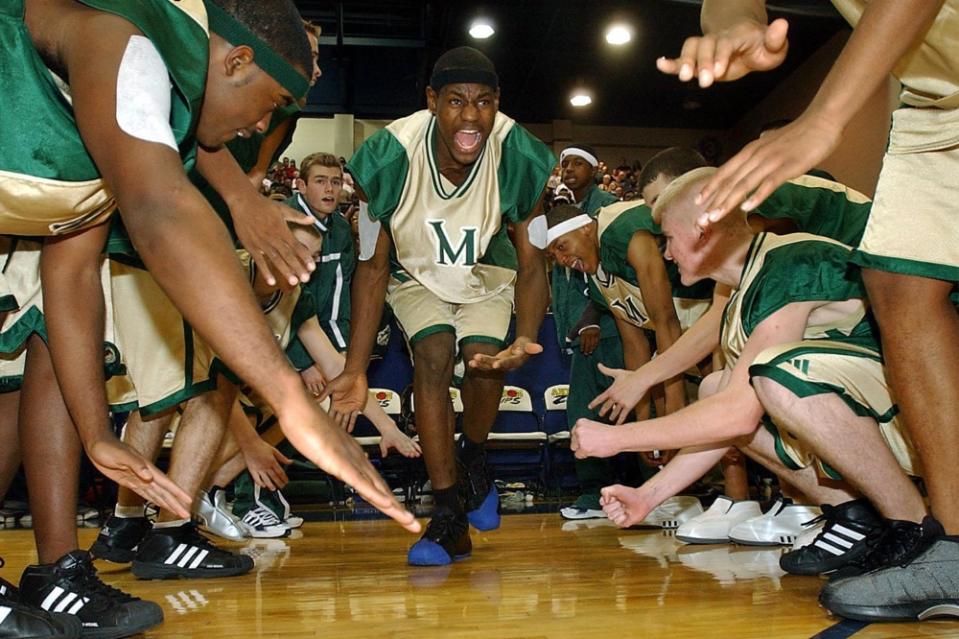
Phil Masturzo-USA TODAY NETWORK
Scotto: One other thing that stuck out to me and other executives around the league is high school players not being eligible to be drafted. A lot of people thought that was going to be a thing in this new CBA. I heard some NBA veterans expressed concern over high school players coming in and taking their spots. From NBA scouts I talk to, they’re fine not going to high school gyms. One executive said it best to me, “I think high school players will be NBA-eligible maybe in the next CBA. With the NIL, players are somewhat satisfied, and the league doesn’t feel as much pressure to allow the kids to make money.”
27:50 NBA awards affected by games played

Dennis Wierzbicki-USA TODAY Sports
Scotto: Kevin Durant alluded to how games played in a season are going to affect awards. He quote tweeted someone, “Don’t count. Didn’t play 65 games.”
Don’t count. Didn’t play 65 games https://t.co/slaYSpBrpj
— Kevin Durant (@KDTrey5) April 7, 2023
I’ve gotten different feedback on it. One NBA GM told me, as far as the rules and scheduling go, “If they made the schedule 60 games, players could find a way to load manage and do it for 40 games instead.” He’s of the mindset that load management is here to stay.
I think, ultimately, games played should matter, but where’s the cutoff? I’ve had other colleagues who are voting that are having a tough time on this. What do you do with a guy like Anthony Davis, who’s got 55 games played at the moment? Durant has 47 games. Kawhi Leonard has 50 games played. LeBron James has 54 games played. Devin Booker has 53 games played.
For some, I think they’re hoping that this will help with players trying to load manage in some form, but it’s going to have a big impact on the awards, no question.
Gozlan: I’ve got an opinion on this, and I’ve also got a solution and counter to how do you go about this when so many of the best players are missing that many games. Personally, I feel like we’re going to have years when we have some strange-looking All-NBA Teams. I don’t feel like, on the surface, this is going to make more players play games… If you look at the top players who missed a lot of games, they were injured. Booker had a big injury. Stephen Curry also had a big injury. All these guys suffered huge injuries. I understand the theory behind this to stop load management, but it’s not why so many players have missed so many games.
When you’ve got so many of the best players missing so many games already, I feel like when you’re in high school, and the whole class averaged a C- on the test, and now the teacher has to curve it, and everyone gets a B. That’s how I view it. If you’ve got all the best players averaging 55 games a year, then maybe we should lower this hard 65 games played. What if we did the average amount of games played among All-Stars for that season? Something that kind of makes sense for that specific season.
34:30 Three two-way roster spots
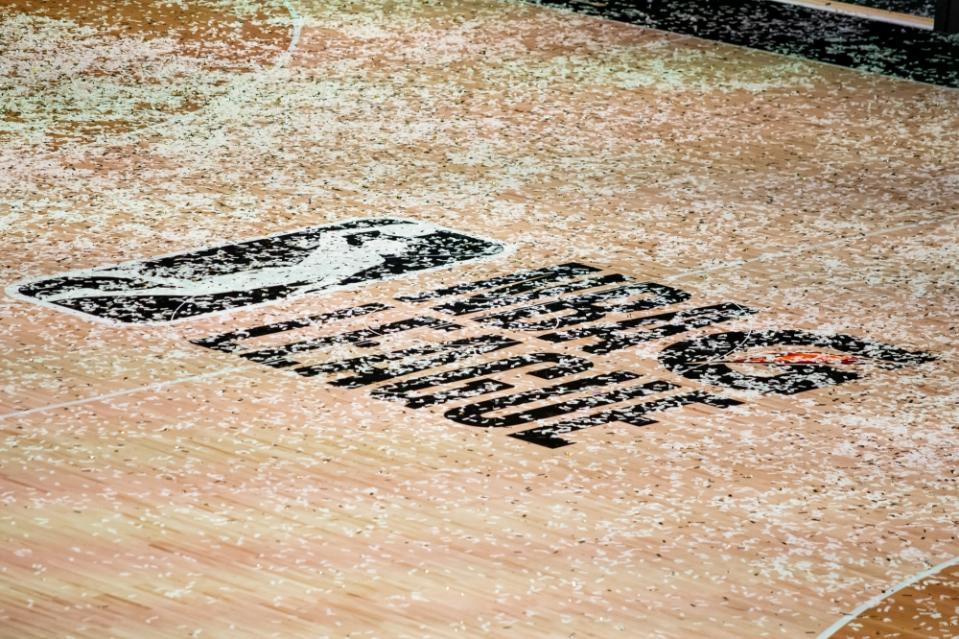
Mary Holt-USA TODAY Sports
Scotto: One thing it seems like, whether you talk to agents, executives, or even coaches, that’s viewed as a unanimous win for all parties involved is the third two-way roster spot. I was told that concept was kind of kicked around a little bit during Covid, given how players were dropping like flies because they were testing positive at the time.
One executive told me, “It helps teams who don’t have a second-round pick be creative in improving their roster on the back end with young guys.” Another GM told me he thinks the third two-way spot is great because some players will get more of a chance that way than guaranteeing a roster spot. Better they make a portion of an NBA minimum salary than nothing at all.
You can follow Michael Scotto (@MikeAScotto) and Yossi Gozlan (@YossiGozlan) on Twitter.

